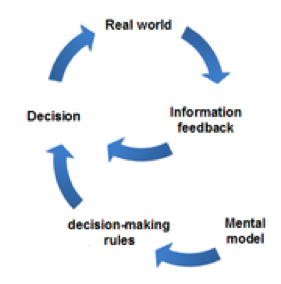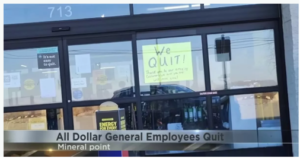Let me begin my latest rant, oh sorry, I mean blog, with a bold and underlined assertion.
For Some, Customer Experience IS no more than a checklist exercise based on assumptions!
Now, I know what you’re probably thinking and saying to yourself, “This certainly isn’t the case within my organization.” To that, I would seriously challenge you to look more deeply into what your organization professes versus how it actually behaves. Furthermore, I’d also challenge you to look at what kinds of assumptions your organization may have around CX to begin with. Chris Argyris, an American business theorist, Professor Emeritus at Harvard Business School, co-founder of organization development (OD), and also known for his seminal work around “learning organizations” described what he calls single-loop and double loop learning as shown below.


Double-loop learning entails the modification of goals or decision-making rules in the light of the experience. The first loop uses the goals or decision-making rules, the second loop enables their modification, hence “double-loop”. Double-loop learning recognizes that the way a problem is defined and solved can be a source of the problem itself. In other words, we begin with a mental model and if that metal model is accepted as fact and you hold tenaciously to those assumptions, change can either be slow or non-existent. Here’s a simple example of the difference between single-loop and double -loop.
A thermostat automatically turns on the heat whenever the temperature in a room drops below a set-point of say 68°F. That’s a good example of single-loop learning. A thermostat that could ask itself, “Why am I set to 68°F?” and then explore whether or not some other temperature might more economically achieve the goal of heating the room would be a good example of double-loop learning.
Let’s consider how this idea might apply to CX. I’ve worked with organizations both past and present where the mental model around CX was and is generally that they need to be involved in CX because a lot of other companies are doing it. That’s the fear-of-missing-out or FOMO mind-set. Then there’s those organizations that get engaged with CX because a senior leader either read a book on CX or attended an industry conference where CX was presented in such a way that demonstrated how that particular business drove revenues and profits to higher levels through CX than if they hadn’t engaged. That’s perhaps a better mental model to begin with, but unless that senior leader were to take personal responsibility for championing the CX cause within his or her own organization and setting the strategy in motion by directing the building of an infrastructure around CX, those processes would typically trickle down to a single individual within the Marketing group in the form of “We need to get CX going in this organization so in your spare time I need you to work on this.” That becomes the checklist mental model and unfortunately this happens more often than any of us in the CX profession would care to admit.
Single-loop learning seems to be present when strategies and goals are taken for granted. The emphasis is on tactics and making processes more efficient. I call that six-sigma gone wrong. By contrast, double-loop learning involves questioning the systems that underlie the strategies and goals. Single-loop involves following routines or some sort of accepted premise or preset plan which is less risky for the individual and for the organization overall and affords greater control. The latter is more creative and reflexive, and involves confronting the basic assumptions behind ideas or policies and is inherently riskier for both the individual and the organization.
Argyris argued that double-loop learning is necessary if practitioners and organizations are to make informed decisions in rapidly changing and often uncertain environments. News Flash: We are in rapidly changing and uncertain environments!!
Therein lies the basic problem as it relates to CX. In many organizations, leaders often give little more than lip-service to CX in the form of “Oh yes, we measure customer experience in our company; We’re all about the customer.” In my humble opinion, those that offer little more than those kinds of claims are simply out of touch and full of ego-driven hot air.
Taking a stand for the cause of Customer Experience as a real and essential component of overall strategy that serves to differentiate an organization from their competition takes more than platitudes and soundbites. It requires courage and real leadership. Furthermore, to really create a customer-centric organization and embed CX within the organizational culture, it takes more than asking a single individual within a Marketing department to make it happen. As the saying goes, it takes a village—and a committed one at that.
But back to my main point here, success with CX can’t be reduced to an item on a checklist. And it also can’t be based on assumptions such as higher CSAT scores (or NPS scores) lead toward higher revenues and profitability. Too many organizations still assume that scoring higher is the goal of CX. They may think, “If I earn the JD Power Award in my industry, I must be doing great.” Not necessarily—and even if that were so, why would you want to stop there?
Challenging the status quo or bucking accepted norms within organizations is admittedly risky. Cultures that embrace and encourage that kind of behavior where you can speak your mind and offer your viewpoint without being labeled as a rebel or malcontent and suffering the consequences may be fewer in numbers than we may like. But those are the kinds of environments where forward thinkers can survive and thrive—and where you’ll likely find CX as the normal way they approach business—and not part of some checklist. No matter what, executives don’t actually get to decide how customer-centric their companies are—the customers themselves will take care of that!!
CHALLENGE: Name an organization you know of that would either fit or come close to this ideal.






